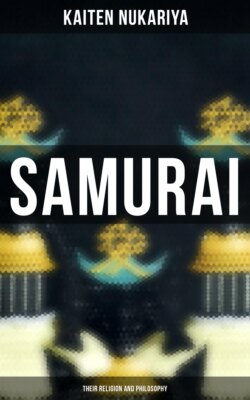Читать книгу Samurai: Their Religion and Philosophy - Kaiten Nukariya - Страница 10
На сайте Литреса книга снята с продажи.
6. The Second and the Third Patriarchs.
ОглавлениеAfter the death of the First Patriarch, in A.D. 528, Hwui Ko did his best to propagate the new faith over sixty years. On one occasion a man suffering from some chronic disease called on him, and requested him in earnest: "Pray, Reverend Sir, be my confessor and grant me absolution, for I suffer long from an incurable disease." "Bring out your sin (if there be such a thing as sin)," replied the Second Patriarch, "here before me. I shall grant you absolution." "It is impossible," said the man after a short consideration, "to seek out my sin." "Then," exclaimed the master, "I have absolved you. Henceforth live up to Buddha, Dharma, and Samgha."37 "I know, your reverence," said the man, "that you belong to Samgha; but what are Buddha and Dharma?" "Buddha is Mind itself. Mind itself is Dharma. Buddha is identical with Dharma. So is Samgha." "Then I understand," replied the man, "there is no such thing as sin within my body nor without it, nor anywhere else. Mind is beyond and above sin. It is no other than Buddha and Dharma." Thereupon the Second Patriarch saw the man was well qualified to be taught in the new faith, and converted him, giving him the name of Sang Tsung (So-san). After two years' instruction and discipline, he38 bestowed on Sang Tsung the Kachaya handed down from Bodhidharma, and authorized him as the Third Patriarch. It is by Sang Tsung that the doctrine of Zen was first reduced to writing by his composition of Sin Sin39 Ming (Sin zin-mei, On Faith and Mind), a metrical exposition of the faith.
